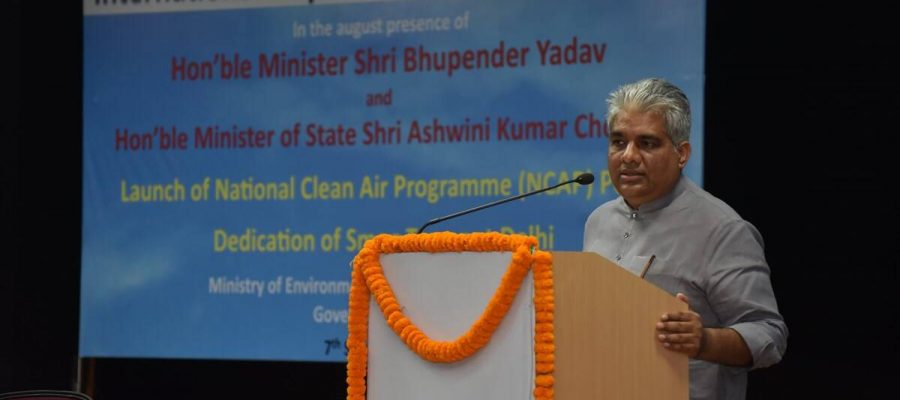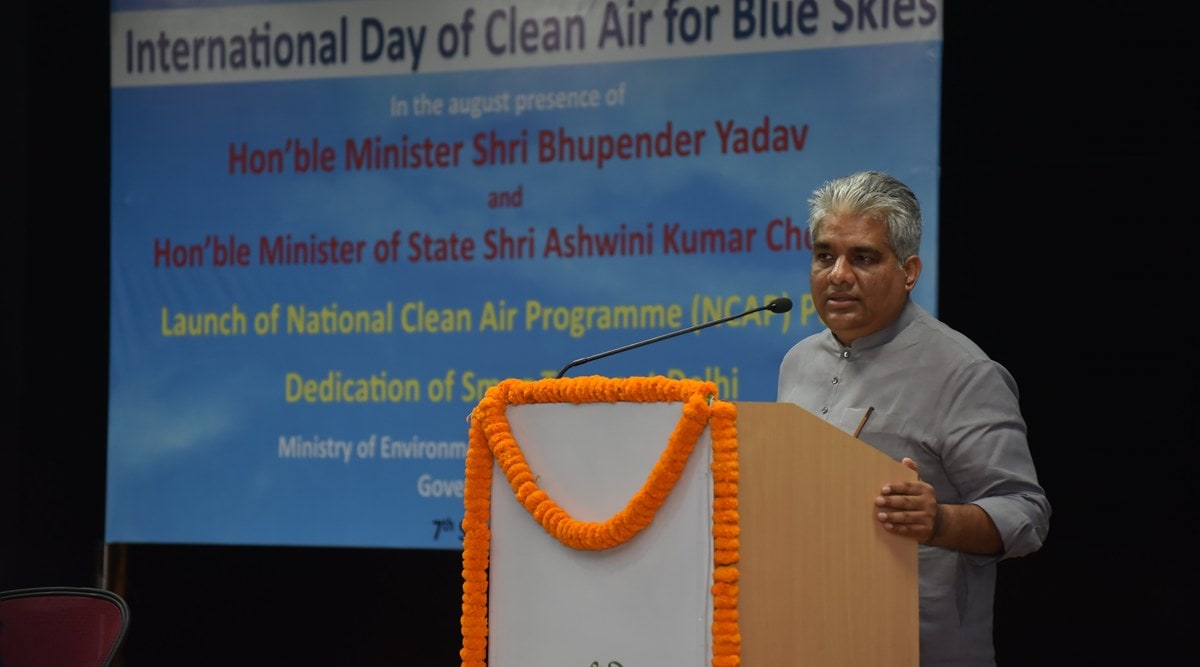The smog tower at Anand Vihar, with a height of over 20 metres, is of downdraft type and is intended for localised reduction in particulate matter.
Union Minister for Environment, Forest and Climate Change Bhupender Yadav Tuesday virtually inaugurated the first functional smog tower in India at Anand Vihar in Delhi. He said the ministry would keep a close watch on the results to determine whether such projects will need scaling up in the future.
A smog tower is a structure designed as a large or medium scale air purifier to reduce air pollution, usually by forcing the air through filters. The smog tower at Anand Vihar, with a height of over 20 metres, is of downdraft type — polluted air comes in from the top of the tower and clean air comes out of the bottom — and is intended for localised reduction in particulate matter. The filtration system used in the tower has been designed by the University of Minnesota with an expected efficiency of 90 per cent. Forty fan units have been installed to provide a design airflow rate of 1,000 m3/sec. The tower has been built by Tata Projects Limited with NBCC (India) Ltd as the project management consultant.
With the expected visit of United States Special Presidential Envoy for Climate John Kerry next week, and COP26 in Glasgow later this year, the Ministry of Environment, Forests and Climate Change has stepped up its activities towards clean air.
Marking the second International Day of Clean Air For Blue Skies, Yadav Tuesday said Rs 375.44 crore has been released to 114 cities during the financial year 2019-20 and 2020-21 for initiating actions under city action plan. Another Rs 4,400 core has been released to 42 cities with a million plus population as per recommendations of the 15th Finance Commission report for the financial year 2020-21. This is in addition to funds available through various central and state government schemes, he said.
Speaking at an event, Yadav said, “86 cities showed better air quality in 2019 in comparison to 2018, which increased to 104 cities in 2020.”
Yadav also launched the Portal for Regulation of Air-pollution or ‘Prana’, in non-attainment cities (NAC) — those which failed to meet national air quality standards over a five-year period — under the National Clean Air Programme (NCAP). The environment ministry and Central Pollution Control Board (CPCB) have a target to achieve 20-30 per cent reduction in particulate matter (PM10 and PM2.5) concentrations across the country by 2024.
City-specific action plans for improving air quality in 132 NACs/Million Plus Cities, targeting city-specific air polluting sources (soil and road dust, vehicles, domestic fuel, MSW burning, construction material and industries) have been prepared, and are being implemented, said officials.
The portal will support tracking of physical as well as financial status of city air action plan implementation, and disseminate information on air quality to the public.
Yadav also attended the first India–Japan High Level Policy Dialogue with Japanese Environment Minister Koizumi Shinjiro. The leaders discussed issues related to air pollution, sustainable technologies and transport, climate change, marine litter, fluorocarbons and COP-26, among other things.
Yadav said India and Japan are exploring strengthening bilateral cooperation, especially on circular economy and resource efficiency, low carbon technology, green hydrogen, etc. He has also requested Japan to consider joining the Leadership Group for Industry Transition, a global initiative spearheaded by India and Sweden.
Shinjiro pointed towards strengthening bilateral cooperation through the Joint Credit Mechanism (JCM), Coalition for Disaster Resilience Infrastructure (CDRI) and collaboration in areas endorsed by the G20, especially on climate, environment and energy.
Source: Read Full Article


